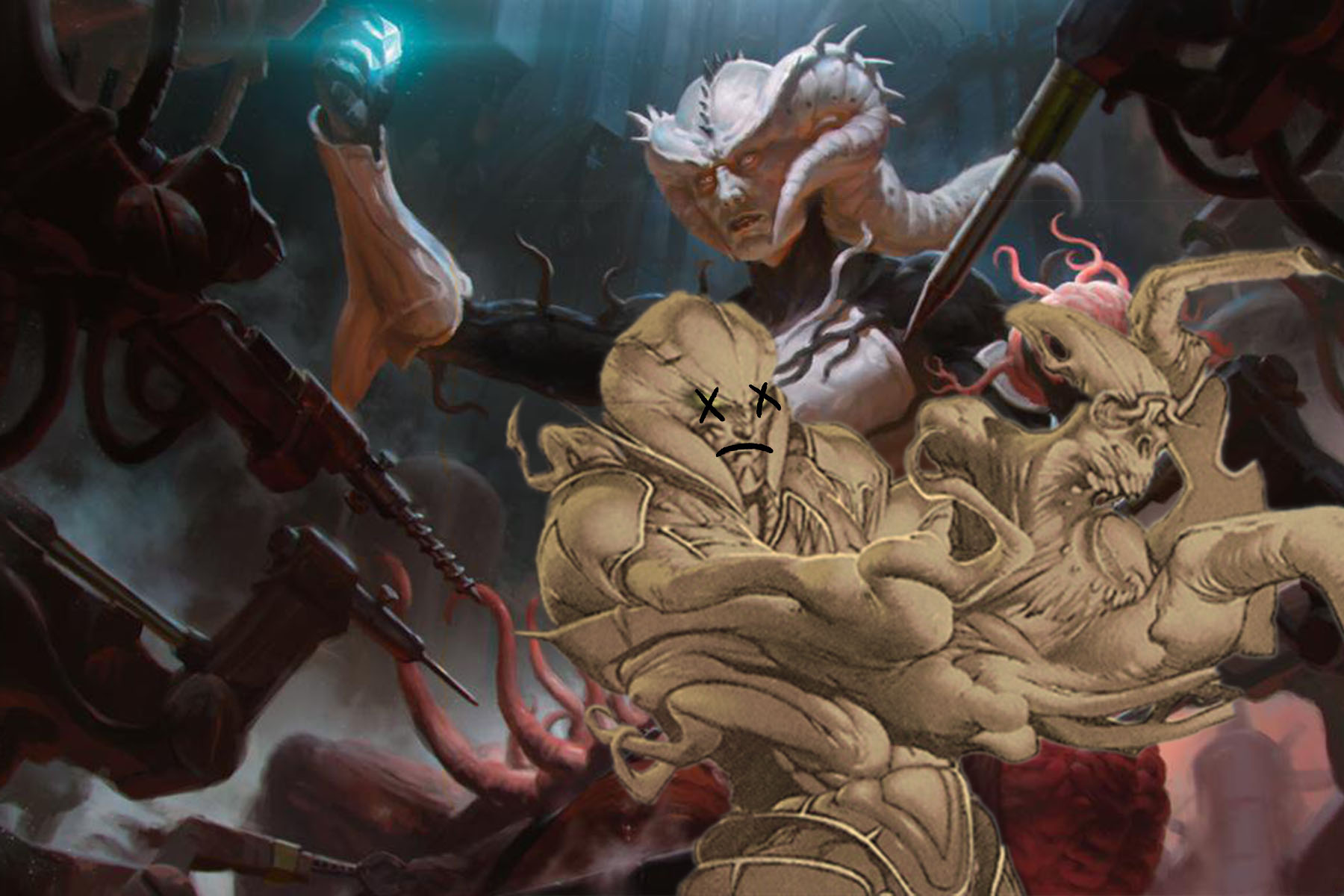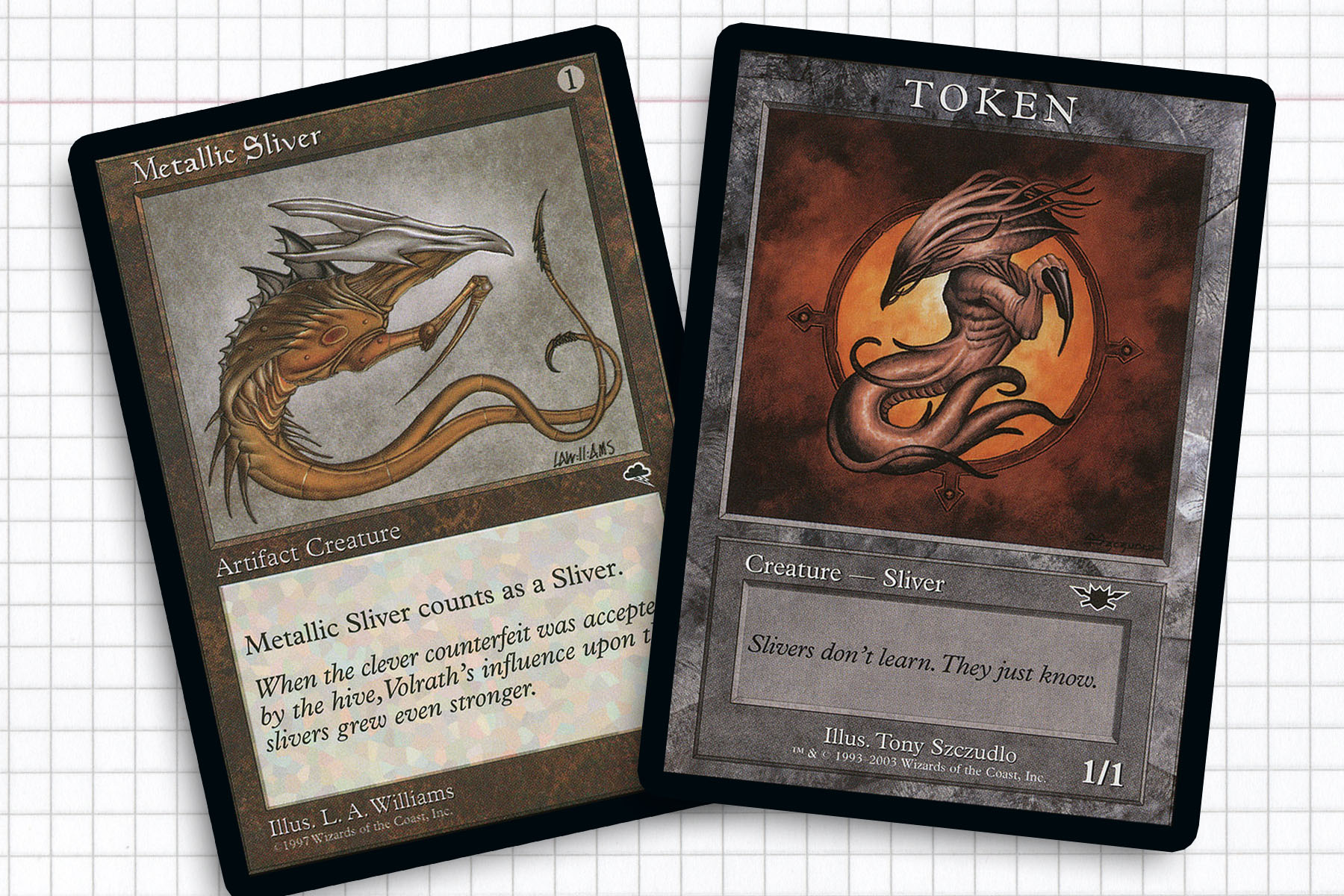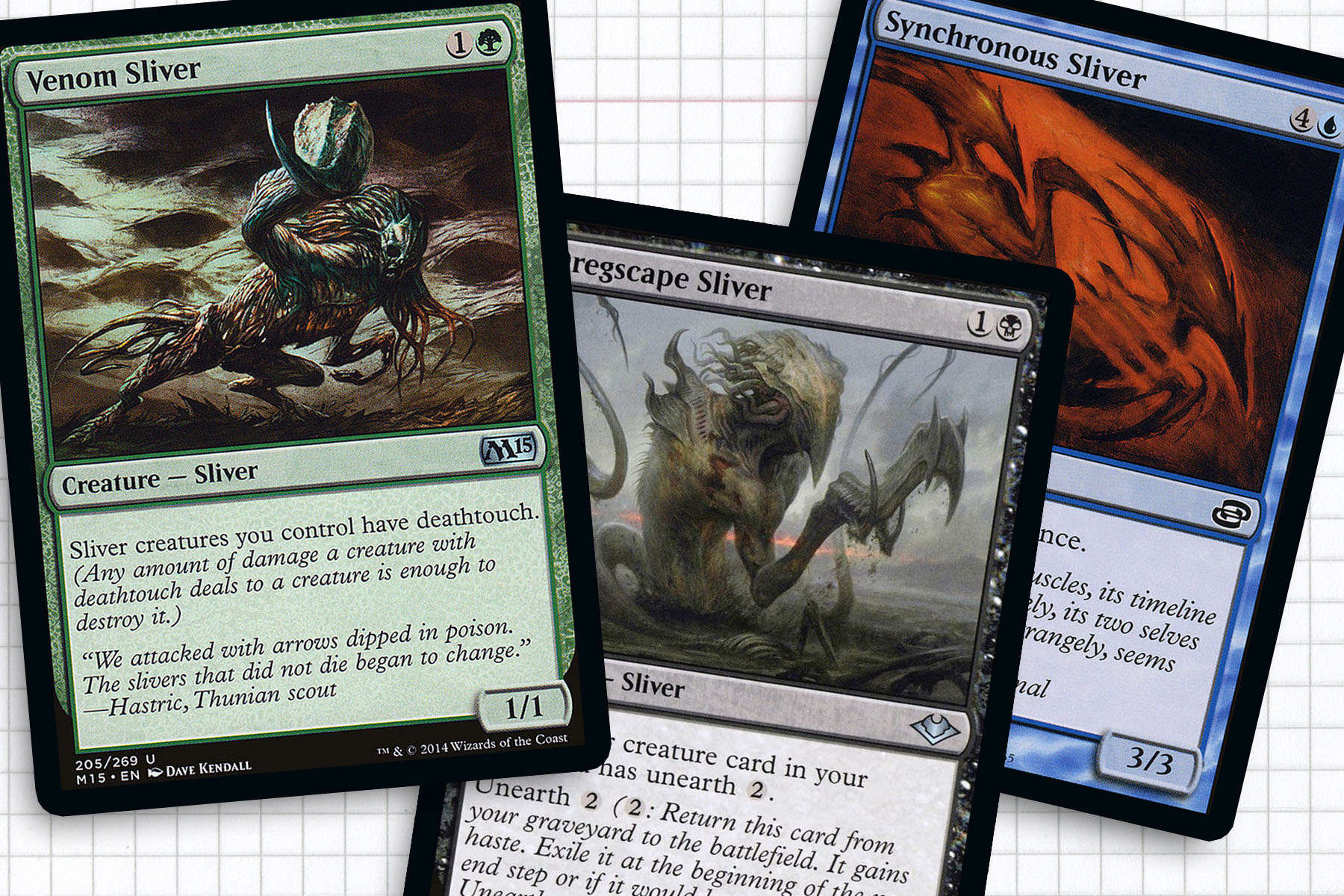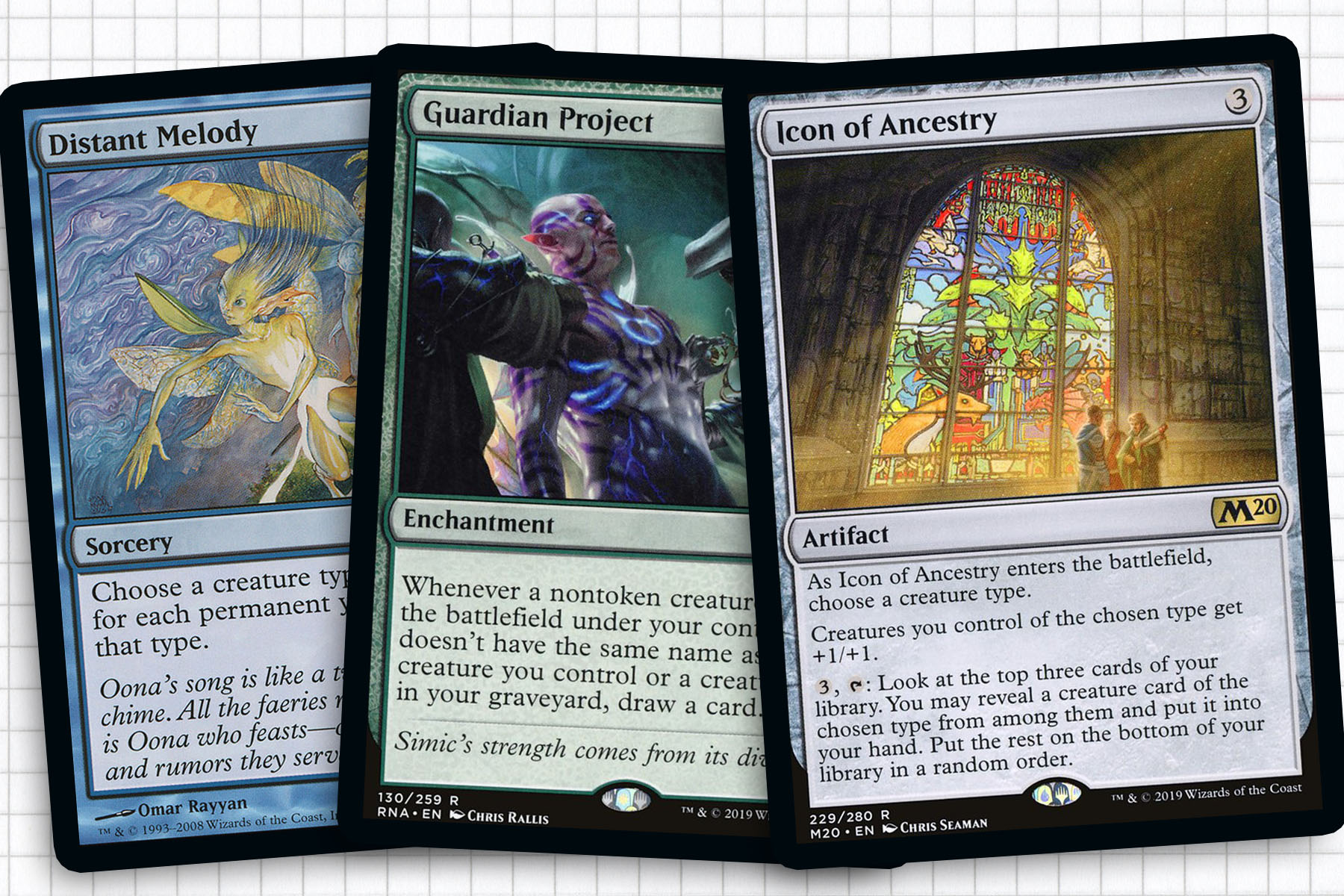One of my biggest complaints about generals is how linear they can be, or that everyone focuses on the “best shell.” When I analyzed the Faceless Menace deck, I thought that Volrath, the Shapestealer would capture my attention and lead to an exciting interpretation to write about. Instead, as I began to formulate plans they splintered off into different ideas all using Volrath at the helm, to the extent that I developed three distinct ideas. A few weeks ago we looked at Volrath as a Clone tribal deck, last week will cover an infect Voltron build, and this week I will be focusing on the lore of the character.

A Brief History: Volrath
As a refresher: The man that would become Volrath was born Vuel, and was introduced as an antagonist to Gerrard Capashen. Vuel grows friendly to Gerrard, then resentful as Gerrard’s actions got Vuel exiled from his homeland. Vuel’s lust for power leads him to the artificial plane of Rath, where he became an apostle of Yawgmoth, god of Phyrexia.
This led Vuel to become Volrath, the new Evincar of Rath and one of the main antagonists of that period of Magic story leading into Invasion block. He experimented on slivers as part of his plans to use flowstone to overlay Rath onto Dominaria and invade the plane. Volrath dies during the invasion at the hands of Ertai, the Corrupted, being disassembled from the inside out.
This much clearer representation of Volrath over Volrath the Fallen comes with a lot of advantages, both flavorful and strategic. He has a link to Phyrexia through his use of -1/-1 counters and he can mimic others while retaining his natural base stats. He is leading you in a direction as a general, but his open-ended design allows for him to be used in different ways, such as this week’s deck built around Volrath’s infatuation with Slivers.

Analyzing Slivers
Slivers are creatures with a hive mind, allowing them to share their abilities with other nearby slivers. The creature type was introduced in Tempest, after Volrath visited an unidentified plane and discovered slivers. As a shapeshifter, he was so fascinated by them that he brought them back to Rath. There he created an artificial sliver, the Metallic Sliver, as a spy to better understand their capabilities. We’ve seen them a few more times over Magic’s history, but the thematic thread this week is building around Volrath’s curiosity.
Volrath is going to be heading up this deck, but he won’t be necessary to victory. With the element of surprise, we’ll be able to get our board set up before the rest of the table even realizes we’re playing with Slivers. But when Volrath, the Shapestealer does become a sliver, he will be the biggest based on natural stats alone, rivaled only by Groundshaker Sliver. The gimmick we are playing off is that it won’t matter which sliver he becomes, because they will all share the same abilities.
Slivers: Brood Sliver, Crypt Sliver, Diffusion Sliver, Dregscape Sliver, Fungus Sliver, Galerider Sliver, Gemhide Sliver, Groundshaker Sliver, Horned Sliver, Leeching Sliver, Manaweft Sliver, Megantic Sliver, Metallic Sliver, Might Sliver, Muscle Sliver, Predatory Sliver, Quick Sliver, Reflex Sliver, Root Sliver, Shadow Sliver, Shifting Sliver, Synchronous Sliver, Syphon Sliver, Tempered Sliver, Venom Sliver, Winged Sliver
Since their creation, slivers have been a very popular tribe, even despite how linear they can be. I remember discovering them not long after they came back in Legions and thought they were the coolest thing I could build around. I fall on the side of liking their original artistic design, but don’t feel that the change from granting global effects to all slivers in play over to only affecting their owner’s creatures was a bad thing at all. Times change. In the event of two sliver decks meeting at a table, fixing board complexity was a positive result.
Unlike any other theme I have covered with Volrath in the last few weeks, we are unrelentingly in on a theme this time. When you count the five creatures with changeling in this deck, the list is almost one-third slivers. Because of this we have a lot of different creatures to highlight, far more than I could even reasonable dedicate time to.

One upside of slivers being a tribe across Magic’s colors is that creatures like Gemhide Sliver and Manaweft Sliver were inevitable. This list has spells like Journey of Discovery and Skyshroud Claim to make sure we can reasonably have our colors, but this is eased by the fact that our creatures can also be sources of mana. Rounding out our ramp package is Pir’s Whim, which at worst can grab Opulent Palace, but will likely be finding Sliver Hive to provide mana when we need it and token creatures when we can afford them.
Every time we’ve seen slivers, Wizards has given us some form of anthem effect to help grow their power and toughness. Lucky for us, they almost always come in green. At only two mana, both Muscle Sliver and Predatory Sliver are cheap anthem effects that have value as we curve out or as a solid late game topdeck. But when we upgrade to the more expensive Megantic Sliver and Might Sliver that the combat math can get very tricky for the rest of the table.
Having anthem effects alone is not going to be enough to win games, and frankly is not the selling point of slivers. Simply gaining flying from Galerider Sliver or Winged Sliver can often be enough to make our creatures unblockable in many Commander games. But we can do one better by using Shadow Sliver and Shifting Sliver to literally make our creatures unstoppable during combat. Lastly, while not as impressive, trample from Groundshaker Sliver or Horned Sliver is going to mean that if nothing else, we will be progressing the game through combat.
Slivers do more than grow in size and phase through defenses. Quick Sliver and Root Sliver can be a potent pair, making our creature spells castable at flash speed and uncounterable to boot. Playing against a deck like this can also lead to keyword soup developing, as Synchronous Sliver gives our team vigilance, Reflex Sliver provides haste, and Syphon Sliver grants our team lifelink. The last important sliver related interaction comes in the form of Shapesharer and Unnatural Selection, which both allow Volrath to become a sliver without having to have any counters already set up on them.

Never Forgetting Card Advantage
This deck is designed to be a surpprise sliver deck rather than focusing every game around its general. As such, I have drawn back the amount of spells that solely place counters on creatures. We have Fungus Sliver and Tempered Sliver as on-theme creatures, but we only transfer over Bloodspore Thrinax, Combine Guildmage, Generous Patron, Ridgescale Tusker, and The Crowd Goes Wild from my previous lists. To make up for the fact that we likely won’t win as quickly as we did last week, we’re still going to be maintaining some level of card advantage.
Card Advantage: Distant Melody, Guardian Project, Icon of Ancestry, Kindred Summons, Mind Spring, Vanquisher’s Banner
While having ten or more slivers in play might only be possible in a best case scenario where we’re clearly already doing pretty well, Kindred Summons for even six creatures can be highly potent when all those creatures will be buffing everyone else. Even drawing that many cards off Distant Melody will refill what is probably a near-empty hand. I was hesitant to add Icon of Ancestry to this list untested, until I realized that a third of the deck have the same creature type. Finally, Guardian Project, which for me is tied with Smothering Tithe as best enchantment to enter Commander this year. With the ability to give all our creatures “draw a card” when they enter the battlefield, card advantage becomes something we never need to worry about.
The idea of dedicating three weeks to covering Volrath seemed overblown at first. But I realized it wouldn’t be a waste, because I wanted to demonstrate that every general comes with so much potential when you’re allowed to broaden your horizons. When a player pulls out Krenko, Mob Boss, you can assume you’re about to face down a gang of goblins. But maybe now, when someone pulls out Volrath, the Shapestealer at your local gaming store, you’ll have to question what you’re about to fact down. Will it be tribal Clones, Infect, or maybe an unexpected slivers build?
Commander allows for so many different expressions of similar ideas. My hope is to highlight the need for people to be empathetic to people that want to try new ideas without the intention of creating something fundamentally broken. Be good to each other and I’ll see you all next time.
Ryan Sainio is a Graphic Designer who writes about EDH and the EDH community. He has been playing Magic: The Gathering since 7th Edition in 2002 and values flavorful and fun gameplay over competitively optimized decks.

